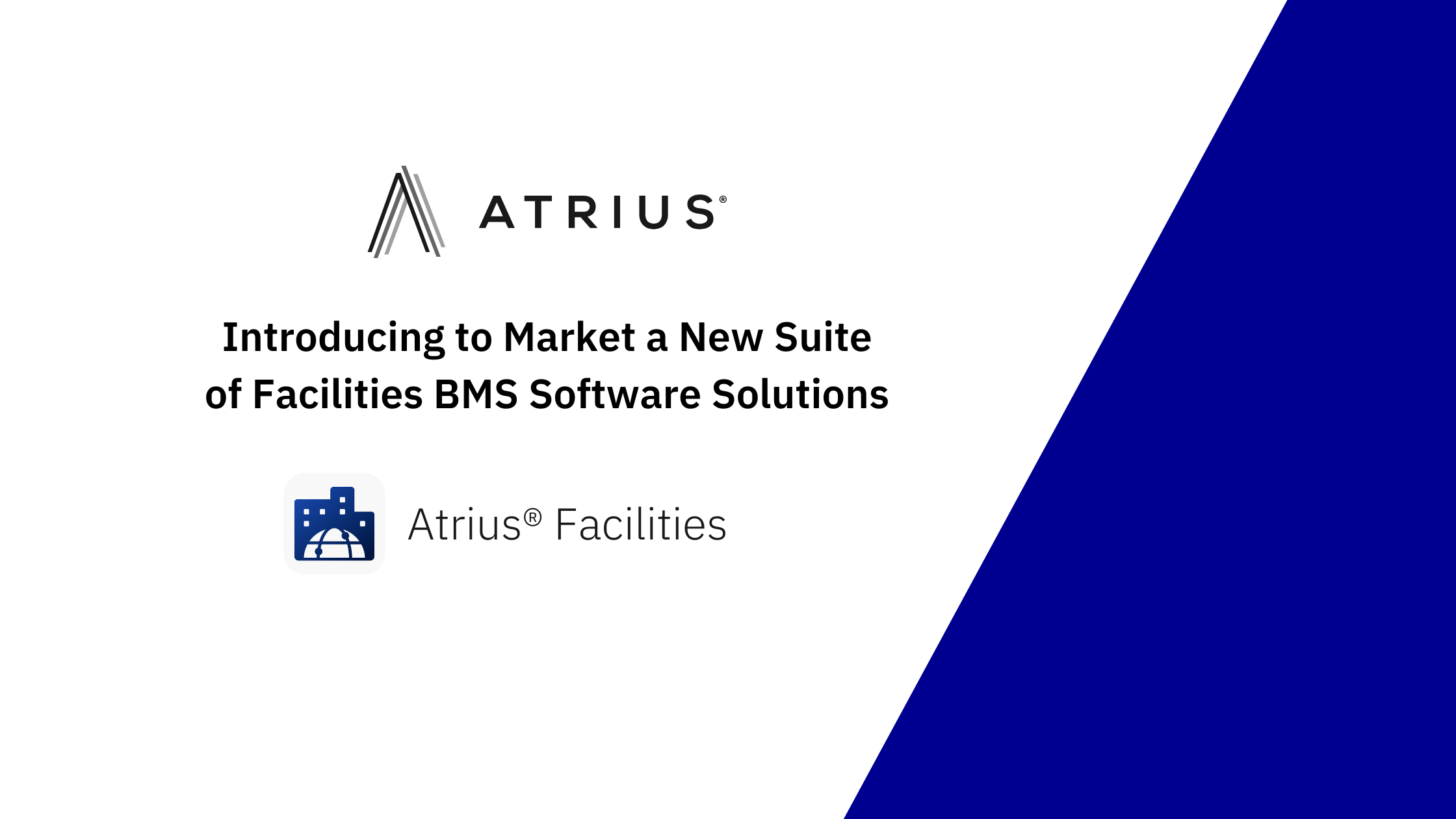The third annual Atrius State of Energy Management report is here!
This year’s responses reflect organizations’ initiatives to create more sustainable, cost-effective built environments.
The research suggests leaders and employees across several industries are aware of their responsibility to minimize their business’s operations’ negative environmental impacts. They also recognize their role in addressing climate-related challenges with proactive, data-driven energy and space management.
And even amid the need to further adapt plans due to pandemic-related challenges, government and organizational leaders are increasingly focused on reducing environmental footprints. The following five overarching takeaways from the 2021 report illustrate what energy, facility, and sustainability leaders prioritize along their respective journeys.
1. Demand Is Rising for Building and System Control at Scale
The first key takeaway from the 2021 report is that energy teams are prioritizing higher efficiency equipment upgrades to reach carbon-reduction goals.
According to the Carbon Leadership Forum, the building and construction sectors account for nearly 40% of the 2019 global energy-related carbon dioxide emissions. The United States 2021 general increase in emissions is likely due to economic growth fueled by coal, gas, and oil.
Among this year’s respondents, 69% of those surveyed reported looking forward to installing more efficient HVAC equipment. And 52% ranked reducing carbon emissions as important. These percentages indicate a shared belief in the importance of the built environment in helping our communities meet broader climate targets.
Going into 2022 and beyond, we expect increasing demand for products to monitor and optimize energy performance across portfolios. Whether a result of the COVID-19 pandemic or the growing need for better tracking and reporting on goals (or both!), tools such as an energy management information system are critical to reaching success.
2. Raising Stakeholder Visibility & Awareness Is Crucial
Organizations that actively engage and inform stakeholders on progress and initiatives related to sustainability are setting themselves up for greater success. Gone are the days where corporate responsibility could be squared away into siloed, philanthropic initiatives. Management, sustainability, and energy teams are being tasked with formalizing key business strategies to meet company environmental and social goals. By increasing internal visibility and accessibility to these goals, associates at every organizational level are encouraged to play an active role.
And the numbers seem to prove this second takeaway! For example, 55% of the survey participants believe that better internal engagement or corporate-level visibility is key to successful energy management. We see this inside Acuity Brands as well. Employees at various locations and across numerous departments are actively engaged in our EarthLIGHT initiatives, proudly tracking their progress with Atrius Sustainability and Atrius Energy.
Engaging stakeholders broadens decision-making perspectives, provides clarity, and ensures sufficient funding for well-planned decisions before execution. Increased buy-in builds trust critical to transforming environmental, social, and governance (ESG) activities from a charitable program to a corporate mission. The Acuity Brands Executive-level ESG Council is an example of empowering invested parties to ensure company-wide alignment and impact.
In 2022, we expect industry leaders to continue aligning their organizational goals with finding solutions to energy management challenges. We anticipate they will urge greater associate and stakeholder awareness of and participation in ESG programs. Perhaps more organizations will establish their own representative ESG councils to track progress towards goals.

3. Creating Greener Spaces is a Priority
The third takeaway from the 2021 State of Energy Management is the number of organizations wanting to reduce their emissions but not yet committing to achieving net-zero. There was a 17-point difference (77% against 60%) in respondents committed to reducing greenhouse gas emissions versus those who want to achieve net-zero. The level of effort and cost associated with attaining a net-zero target compared to reducing greenhouse gas emissions likely explains this 17 point difference.
Yes, the challenges and costs are significant. Achieving net-zero in specific, carbon-intensive industries such as agriculture and aviation requires significantly more creativity than others. But we see great possibility when businesses, community members, and government agencies combine forces.
One significant opportunity to meet ESG targets in 2022 and beyond is upgrading existing infrastructure and investing in solutions geared towards the centralization and visualization of data. However, many energy teams remain heavily focused on manual data collection, management, and cleaning. Automating manual processes such as these gives staff more time for ESG goal-related activity, including tracking, reporting, and celebrating success.
4. Elevating ESG Goals Across Every Aspect of Business Operations Delivers Success
Organizations are seeing increased expectations to manage ESG opportunities proactively from various groups, including internal associates and the financial community. Investors increasingly demand that corporate leaders include representatives across company divisions in sustainability discussions. They also want to see ESG goals integrated company-wide.
Operational needs and capabilities vary between research & development, procurement, and human resources. One size does not fit all; every department cannot operationalize ESG goals the same way.
While 60% of this year’s respondents have sustainability initiatives integrated into their operations, how leaders communicate these plans varied heavily. At the top of the responses, 33% sent updates via newsletters and email, while 19% did not send any at all. If we want to continue expanding the role sustainability plays across an organization, a strategic first step is increasing the overall visibility of these efforts. By next year’s report, we’re hoping we’ll see the number of respondents who don’t see updates decrease and these same leaders joining the 11% who rely on public-facing storyboards.
Because potential usage reduction and costs vary across departments and functions, an integrated approach to elevating sustainability goals involves broad collaboration. Accountability tied to shared departments or buildings combined with a broad strategy at increasing visibility to all stakeholders is fundamental to long-term success.
5. Limited Budget and Resources Are the Biggest Barriers to Success
For the third year in a row, the State of Energy Management report found that time and money are the biggest constraints for energy teams. 49% of those surveyed said lack of time to review and implement findings from EMIS reports hinders success within their programs, and 45% believe they do not have the budget to reach goals set by the organization.
It’s easy to argue that there’s never enough time or money. Still, business leadership needs to act when industry members say these are the biggest hurdles to accomplishing organizational ESG goals three years in a row.
Looking Ahead
Innovation within solutions for the built environment can play an important role in mitigating climate change . Energy professionals are key players in developing solutions and intelligent technologies to reduce emissions and improve indoor air quality.
Automating manual processes is the most apparent, most immediate path towards reaching corporate sustainability goals; optimizing technology also optimizes human resources. Unfortunately, facility, energy, and sustainability leaders are still spending far too much time manually working on spreadsheets instead of implementing data that gets them closer to achieving their goals.
But can we, as an industry, make real progress removing resource constraints? More so, how can we focus our efforts around incorporating solutions that are accessible, scalable, and intuitive enough that enable change agents within organizations to focus on delivering ESG strategies that truly move the needle?
I am confident that, yes, we can. As we look ahead, the need for solutions that meet at the intersection of technology and sustainability continues to grow. These solutions can help teams reach their sustainability goals through transparency, scalability, and automation, enabling us to focus on the humanity behind sustainability goals. Because at the end of the day, we all have a shared responsibility and commitment in making the built environment smarter, safer, and greener.



